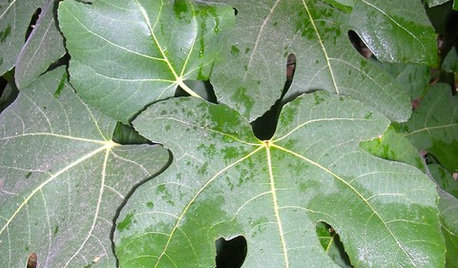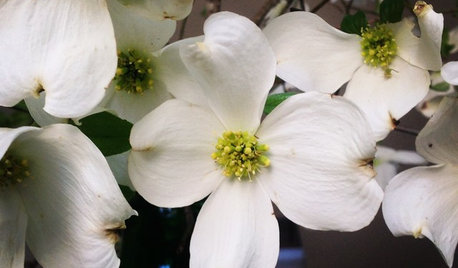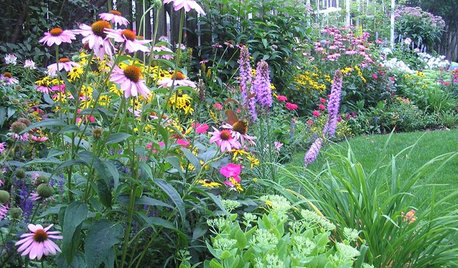The benefit of eating figs
alb419_ny
16 years ago
Related Stories

HOUSEPLANTSPlay Up Some Fiddleleaf Figs for a Lively Indoor Tune
Strike a dramatic chord in a minimalist scene or a country note in a rustic setting — fiddleleaf fig plants harmonize with any style
Full Story
GARDENING GUIDESGreat Design Plant: Common Fig
A full form and delicious fruits make this Middle Eastern tree a favorite in gardens around the world
Full Story
GARDENING GUIDESGreat Design Plant: Cornus Florida Benefits Wildlife
Flowering dogwood provides fiery red foliage in fall and beautiful springtime blooms
Full Story
FLOORS5 Benefits to Concrete Floors for Everyday Living
Get low-maintenance home flooring that creates high impact and works with home styles from traditional to modern
Full Story
LANDSCAPE DESIGNTry Slow Gardening for Some Unexpected Benefits
Why set your garden on the fast track? Here's how to relax and enjoy it in an entirely new way
Full Story
HEALTHY HOME12 Ways to Set Up Your Kitchen for Healthy Eating
Making smart food choices is easier when your kitchen is part of your support team
Full Story
KITCHEN DESIGNKitchen of the Week: Turquoise Cabinets Snazz Up a Space-Savvy Eat-In
Color gives a row house kitchen panache, while a clever fold-up table offers flexibility
Full Story
ARBOR DAY8 Reasons to Plant a Great Tree
Beauty is its own reward, but the benefits of planting the right tree in the right place go way beyond looks
Full Story
Fruit Displays Sweeten Summer Interiors
Eating the rainbow takes on a new meaning in these seasonally inspired fresh fruit accents
Full Story
BEDROOMSLoft Beds Give Rooms a Lift
Make more space for storage, eating or just plain living when you elevate your sleeping quarters with a loft bed
Full Story





italiangirl74
bjs496
Related Professionals
Beachwood Landscape Architects & Landscape Designers · Ilchester Landscape Architects & Landscape Designers · Mahwah Landscape Contractors · Nutley Landscape Contractors · Tehachapi Landscape Contractors · Webster Groves Landscape Contractors · Sun Valley Landscape Contractors · Golden Valley Landscape Contractors · Norridge Landscape Contractors · Hockessin Decks, Patios & Outdoor Enclosures · Saint Louis Park Decks, Patios & Outdoor Enclosures · Ridgewood Fence Contractors · Clarksburg Fence Contractors · Lenexa Fence Contractors · Lomita Fence Contractorspeg919
bjs496
mountainman0826
paully22
bjs496
marylandmojo
ottawan_z5a
alb419_nyOriginal Author
marylandmojo
Joeray
alb419_nyOriginal Author
marylandmojo
bjs496
peg919
herriman
saad_2009
dieseler
italiangirl74
ottawan_z5a
oxankle